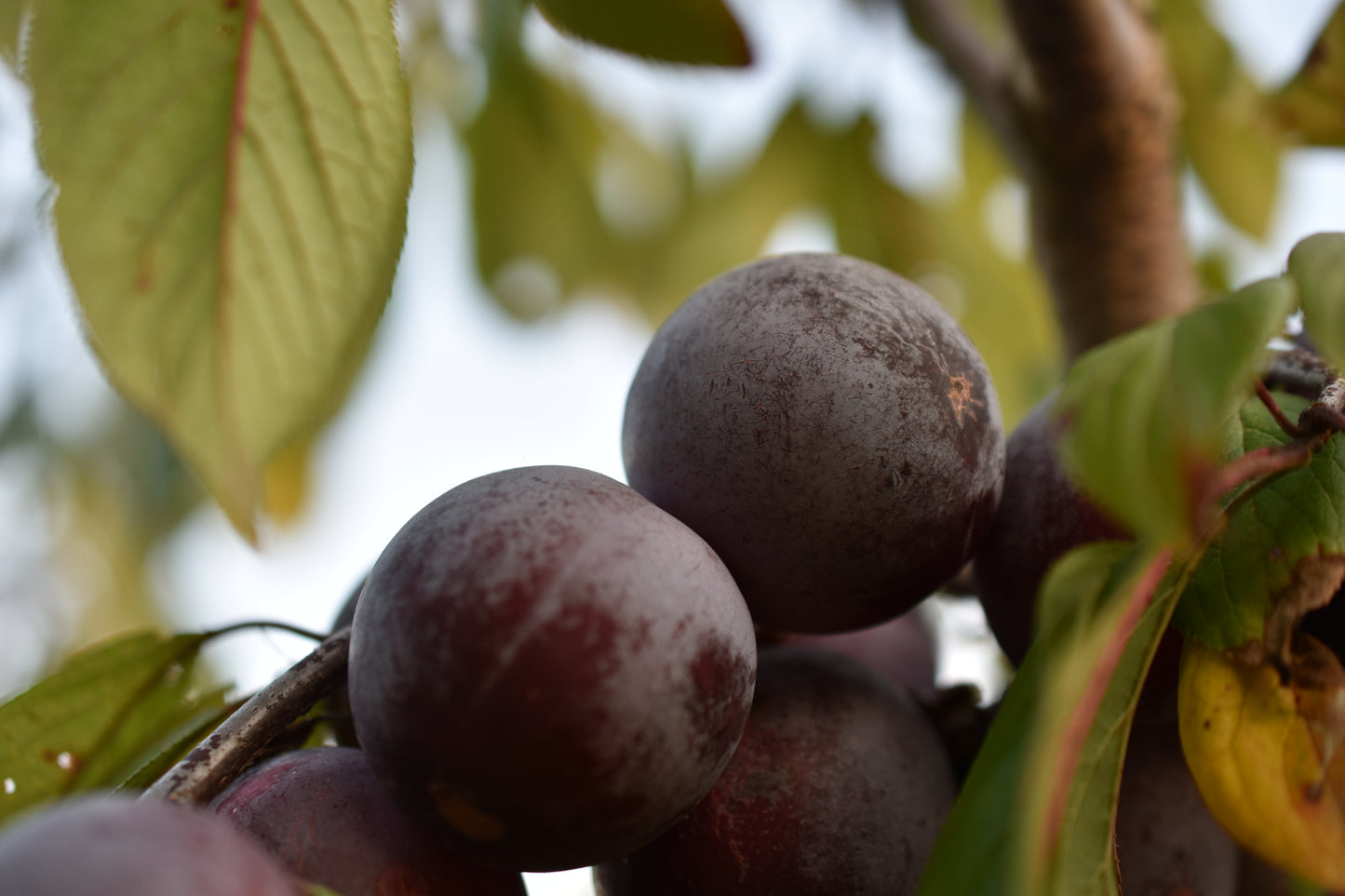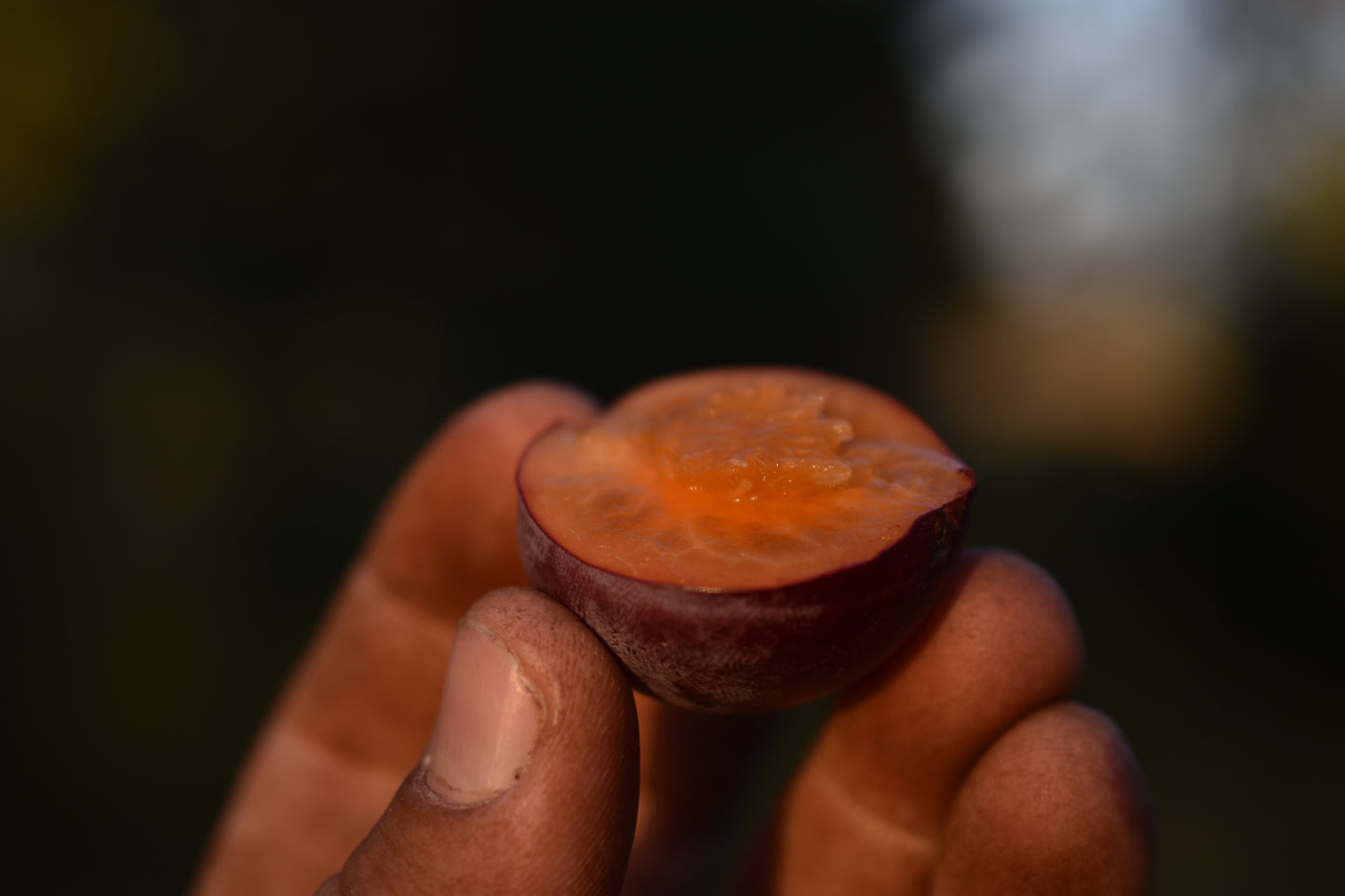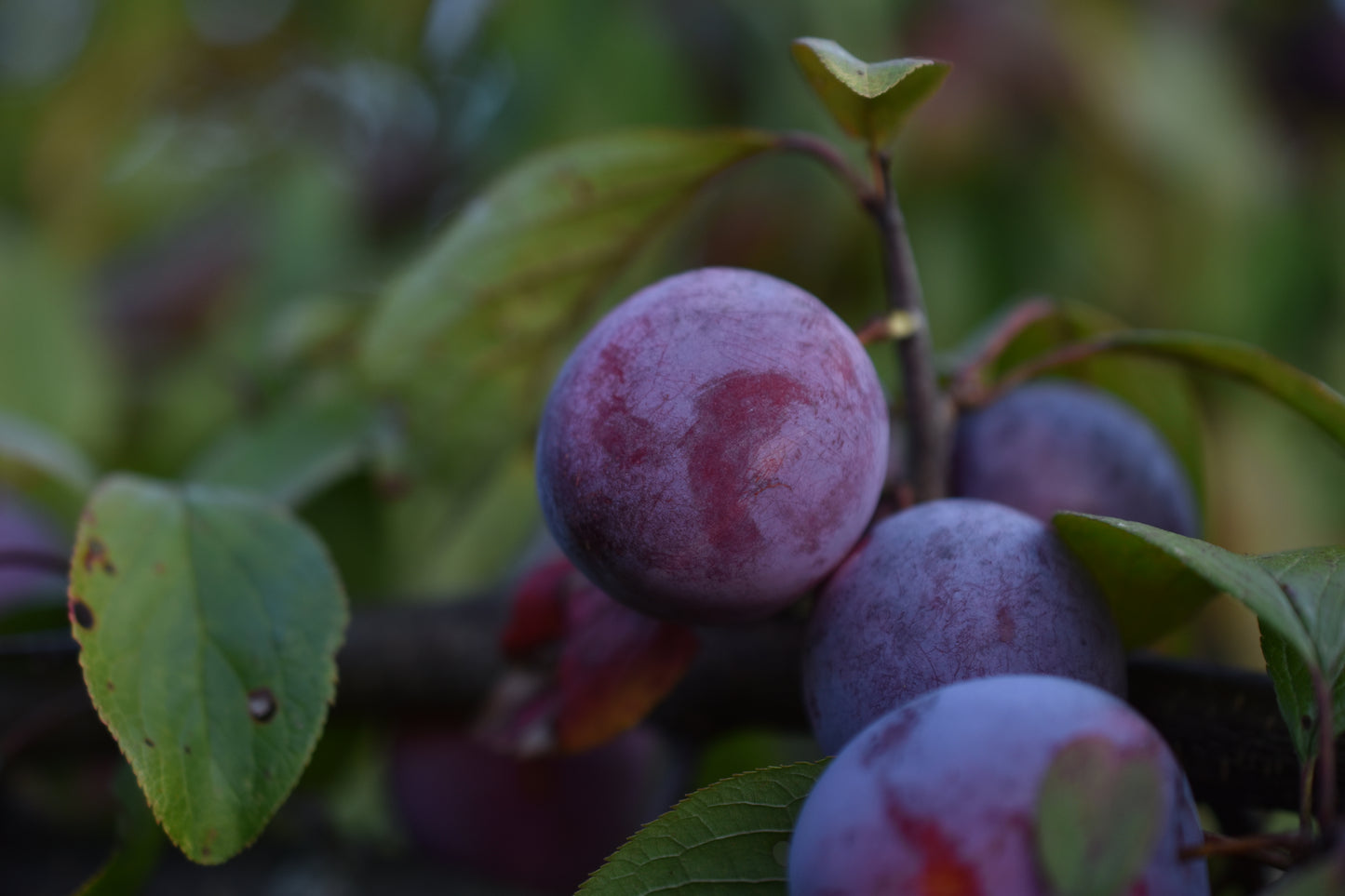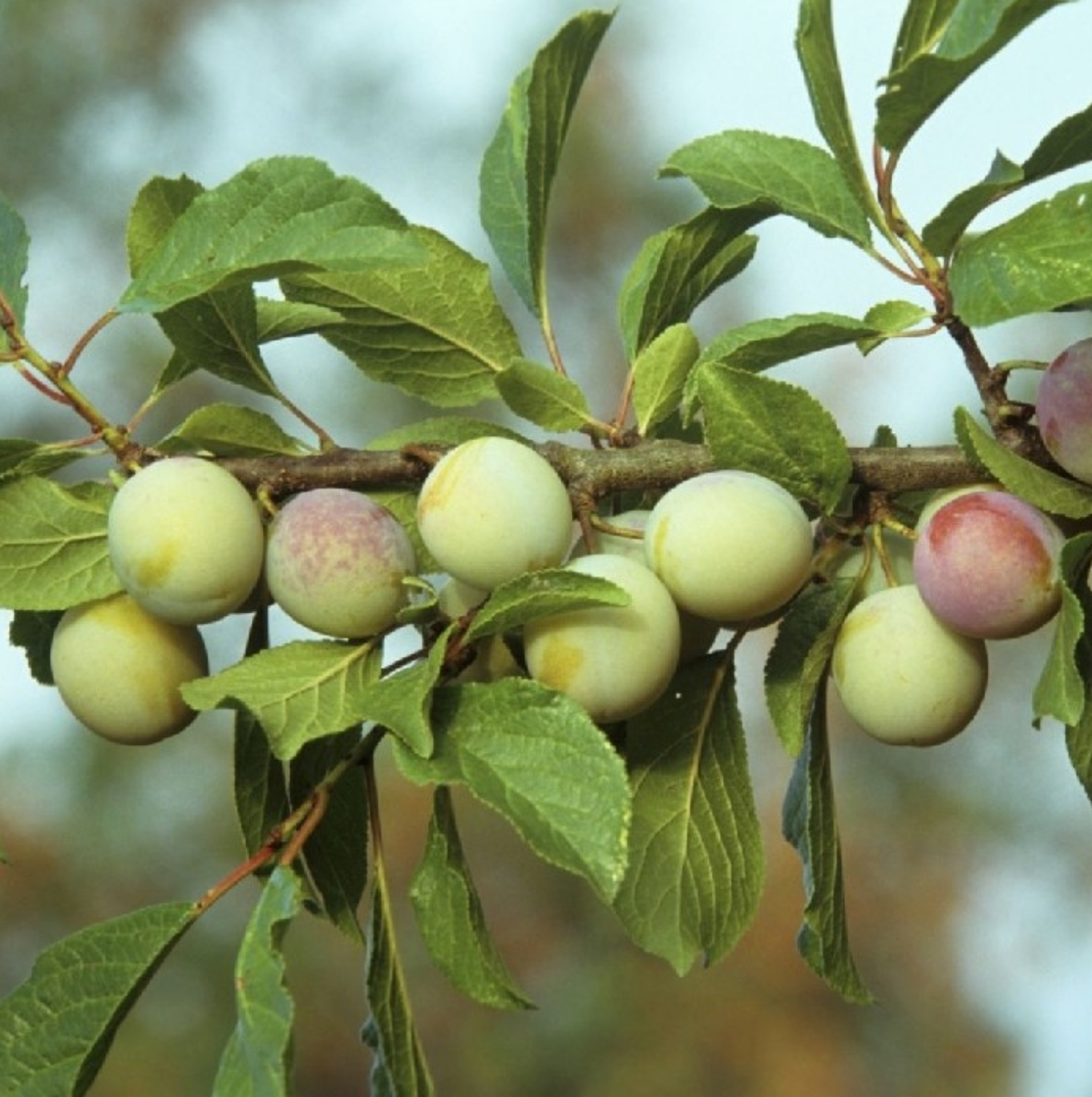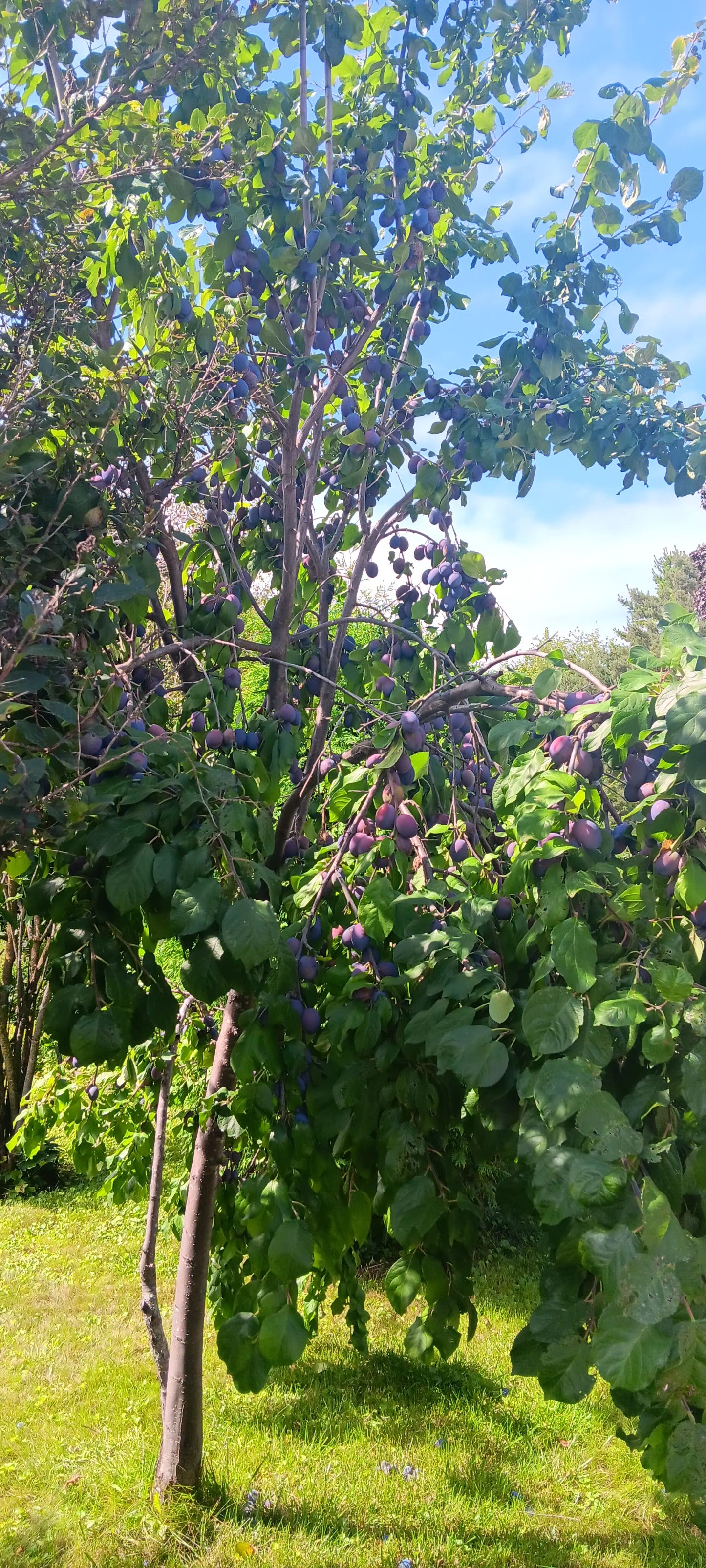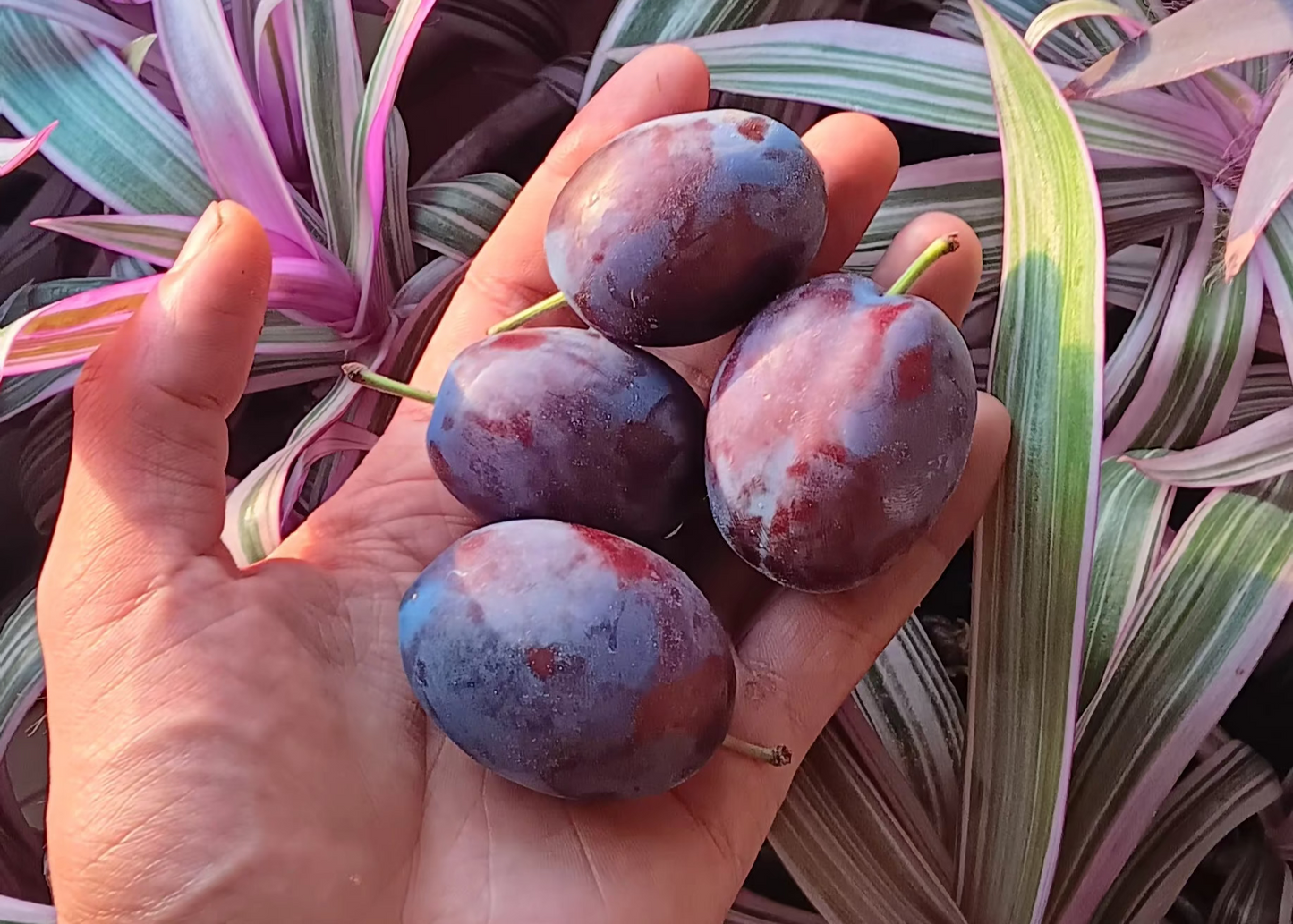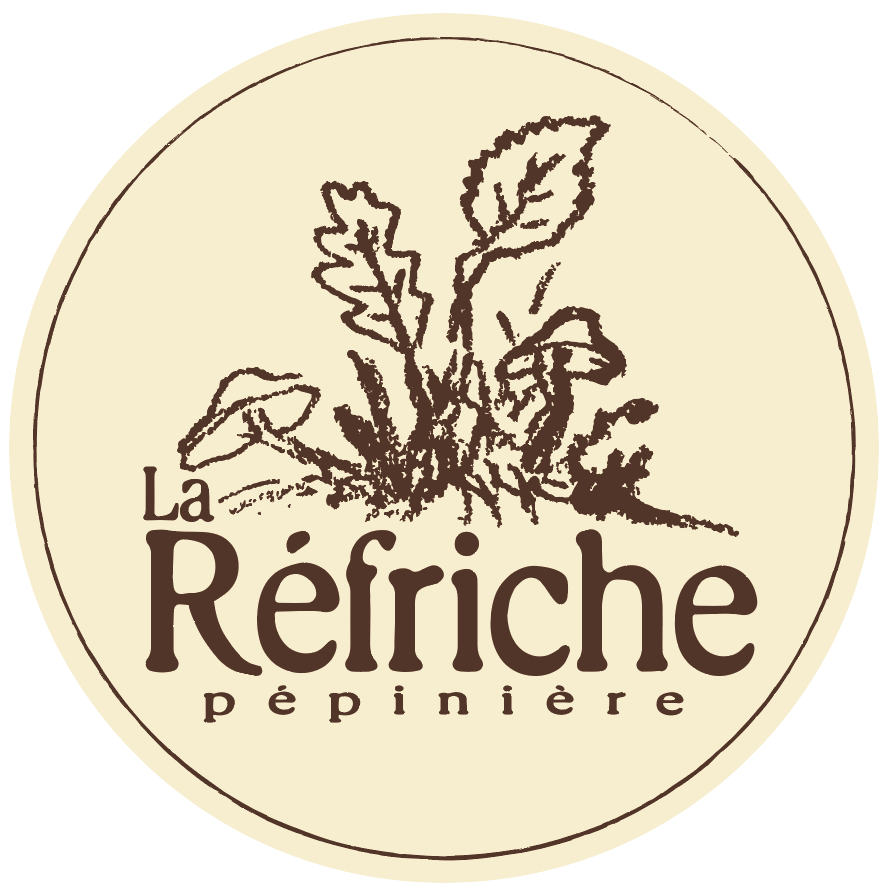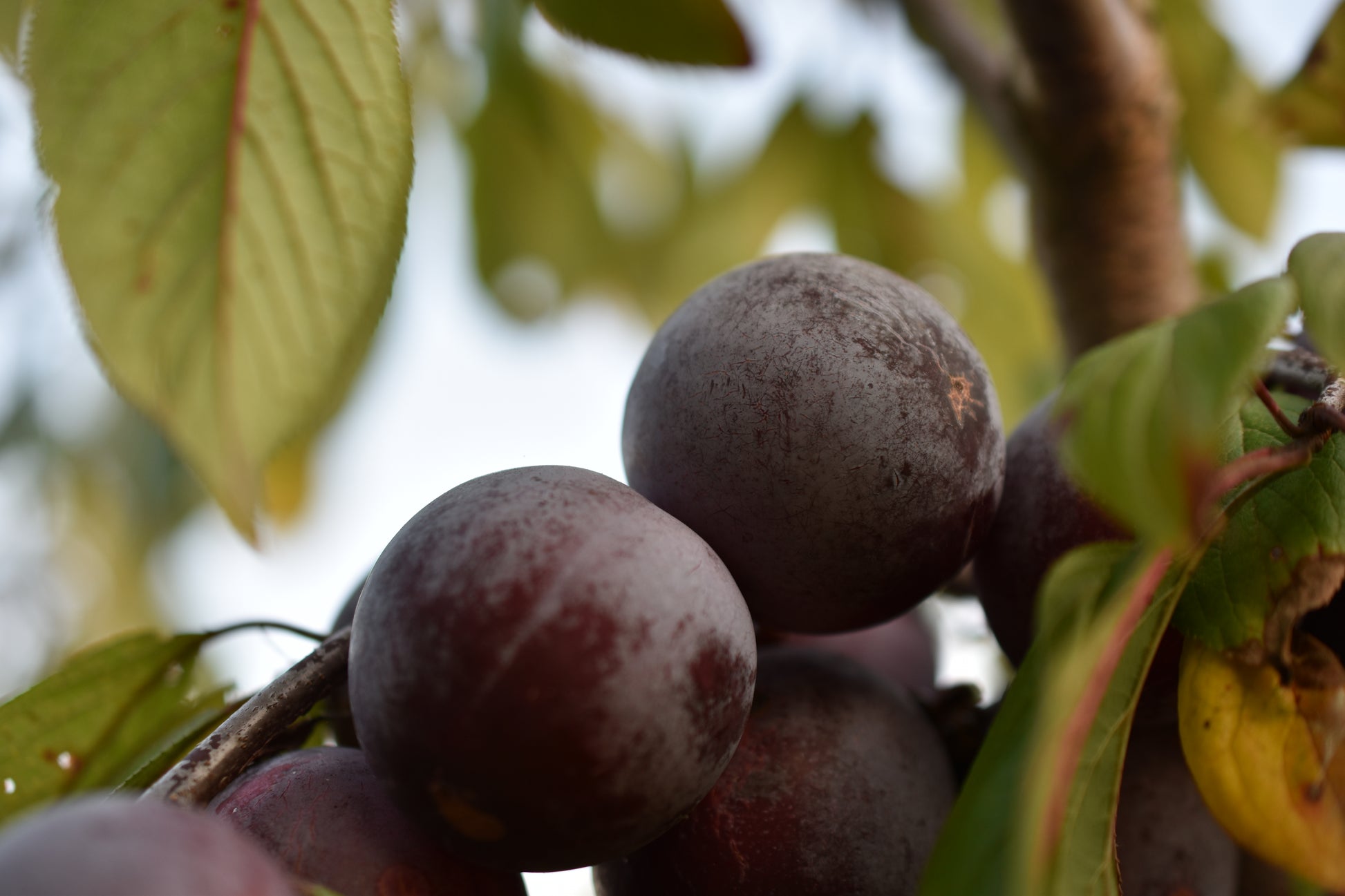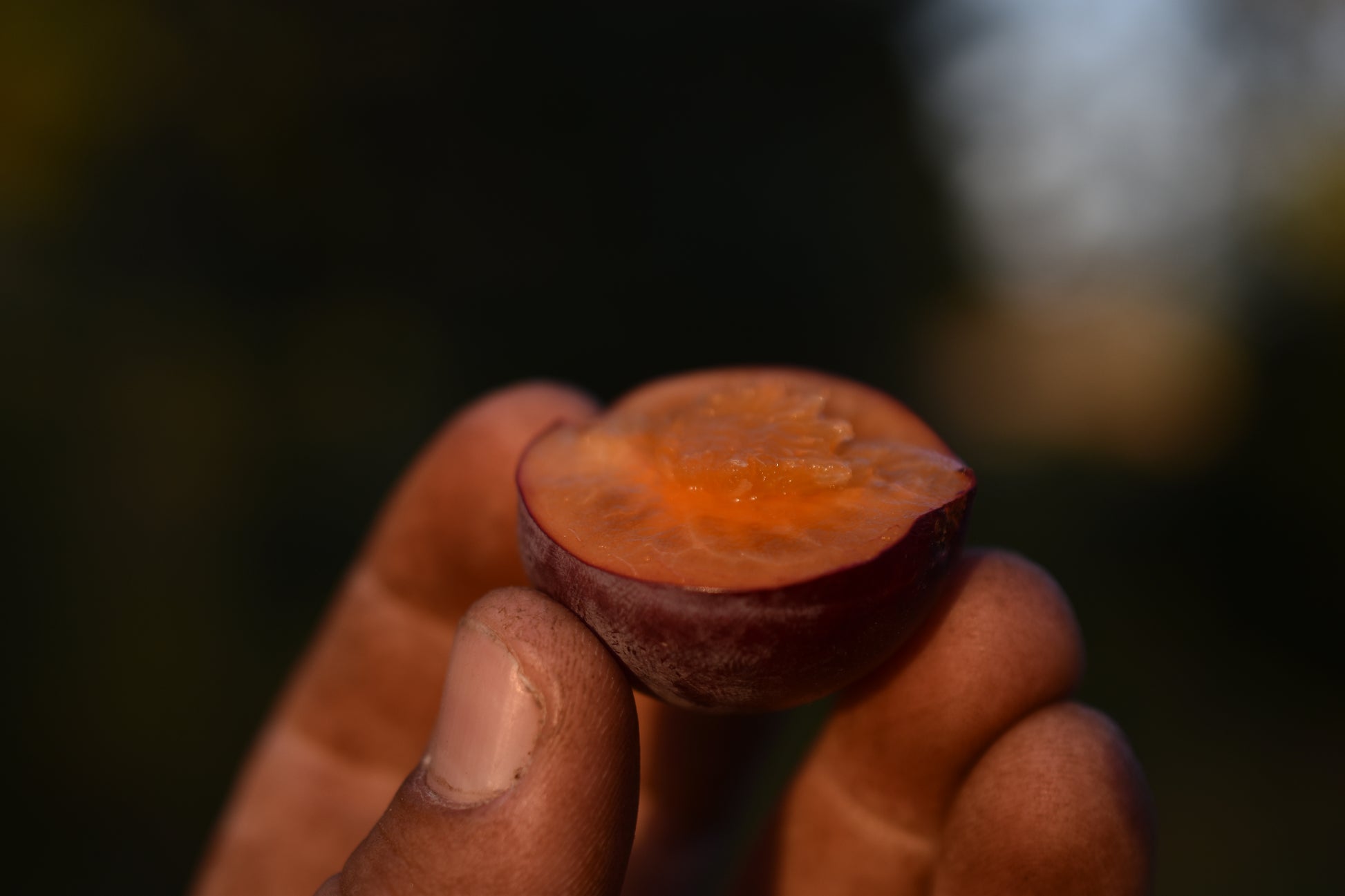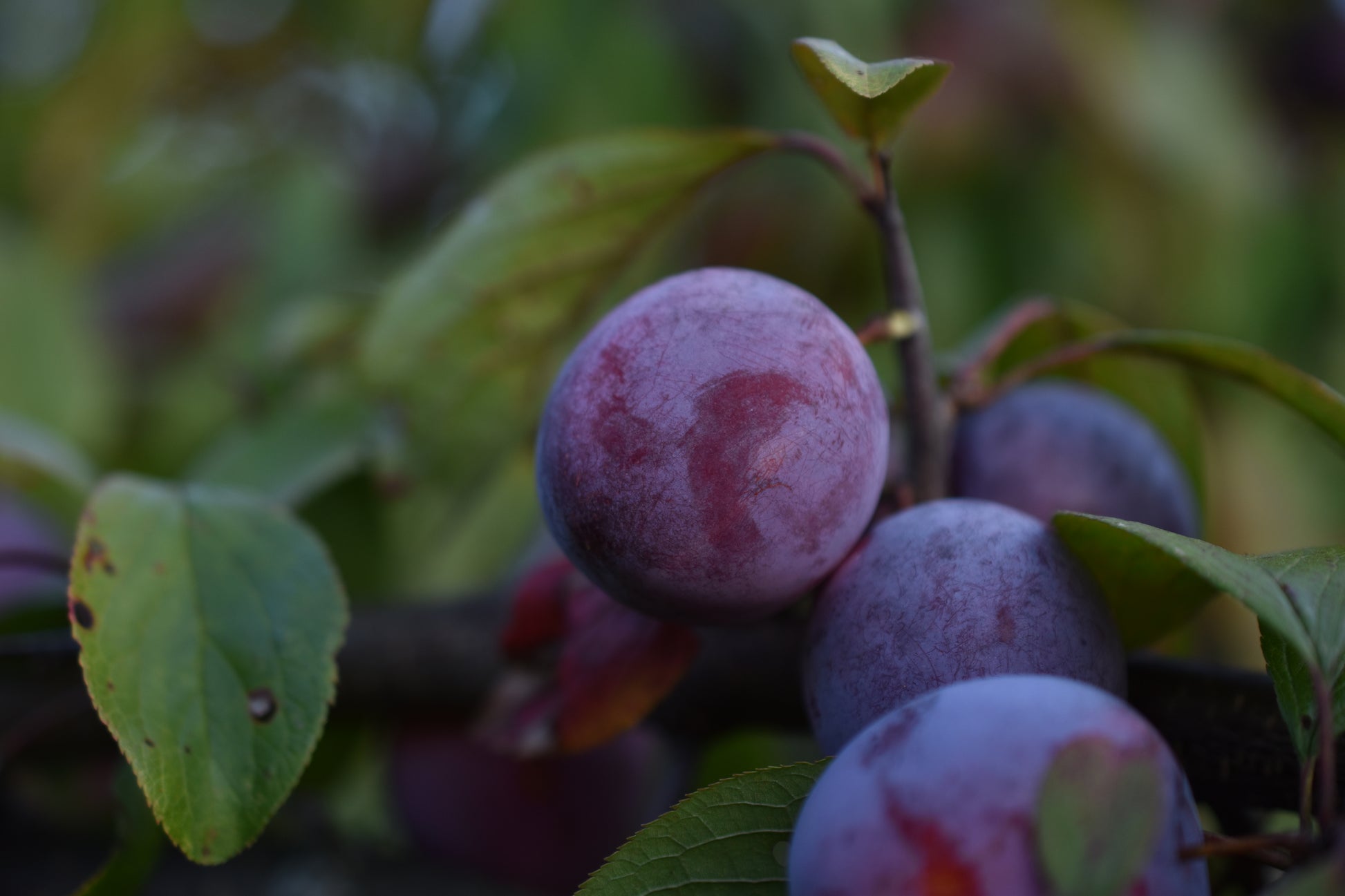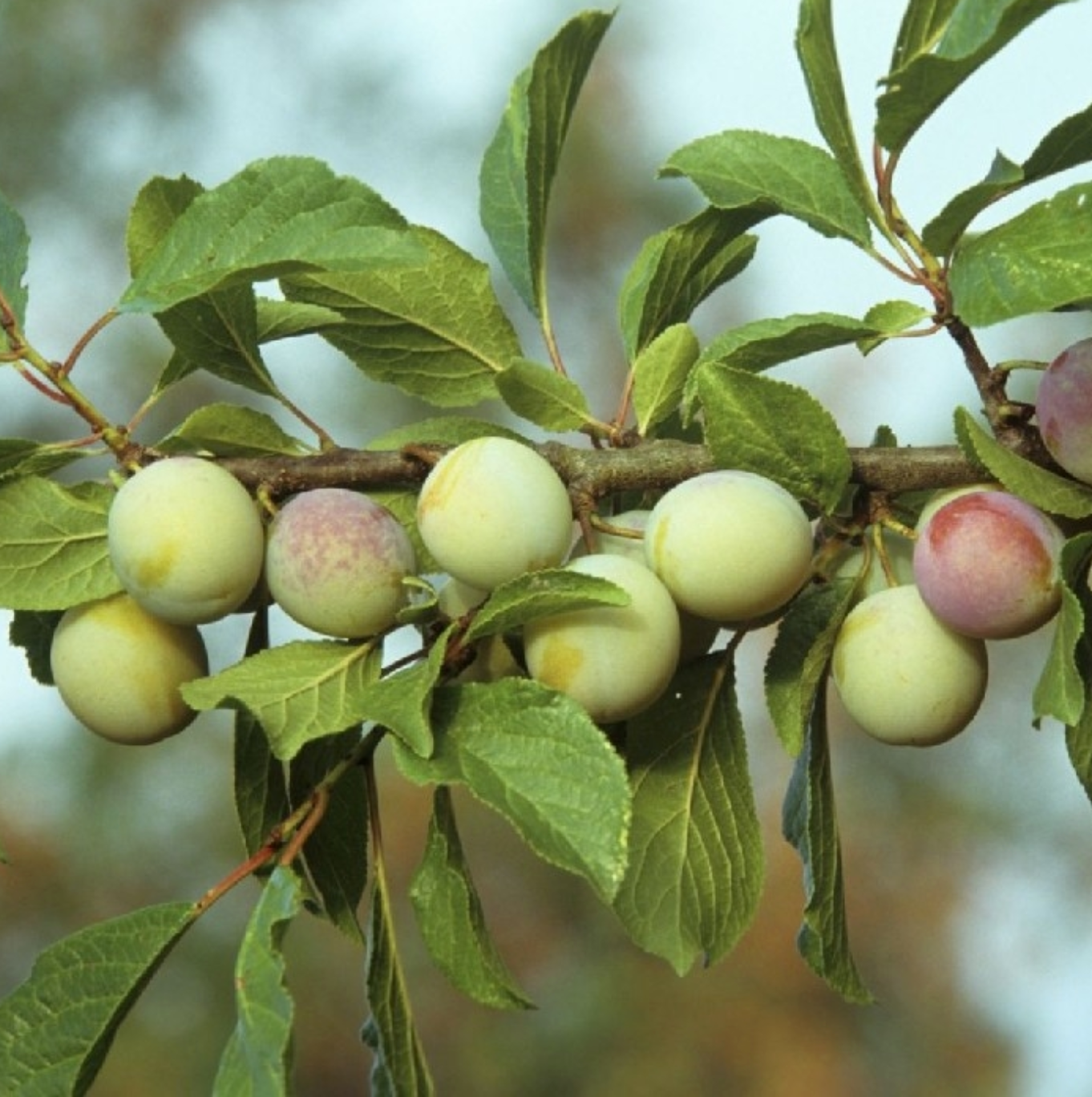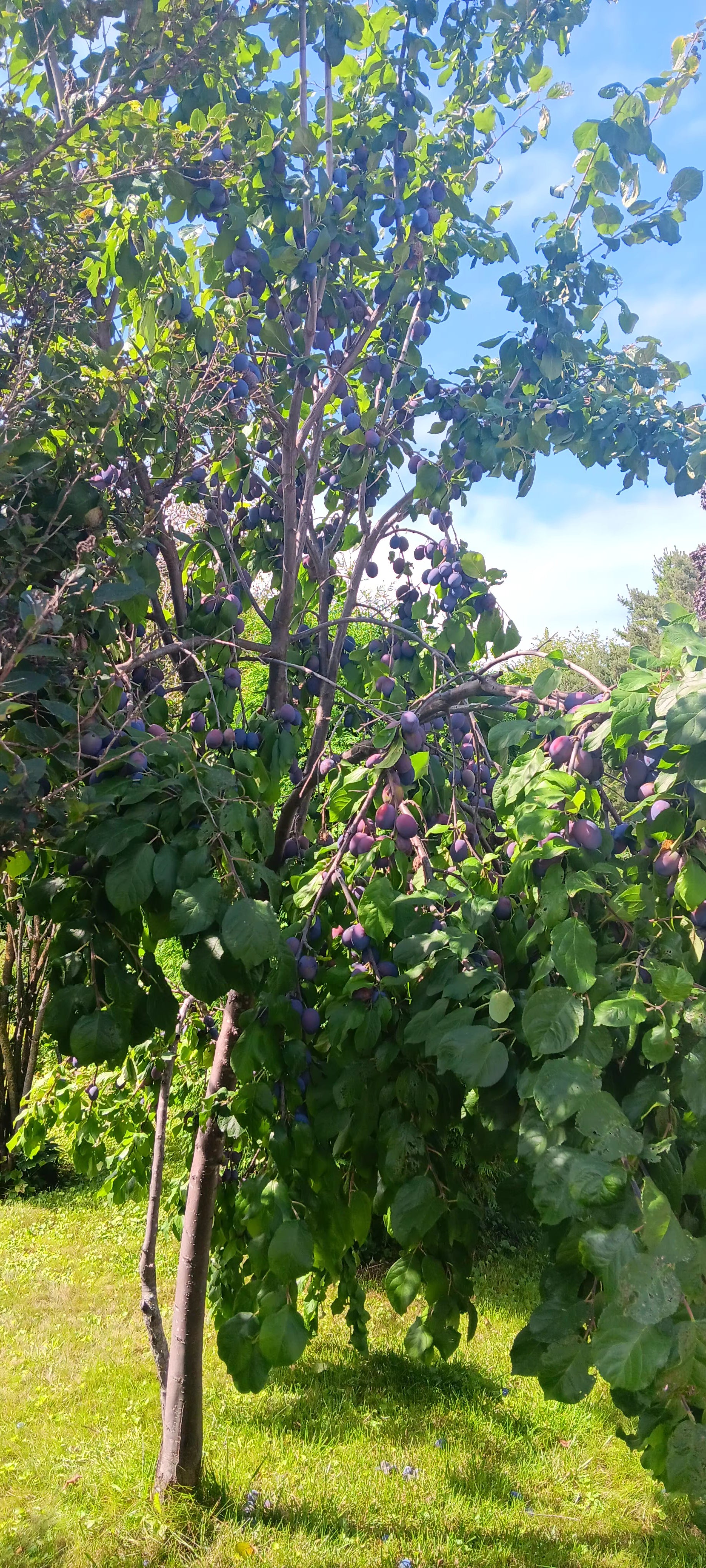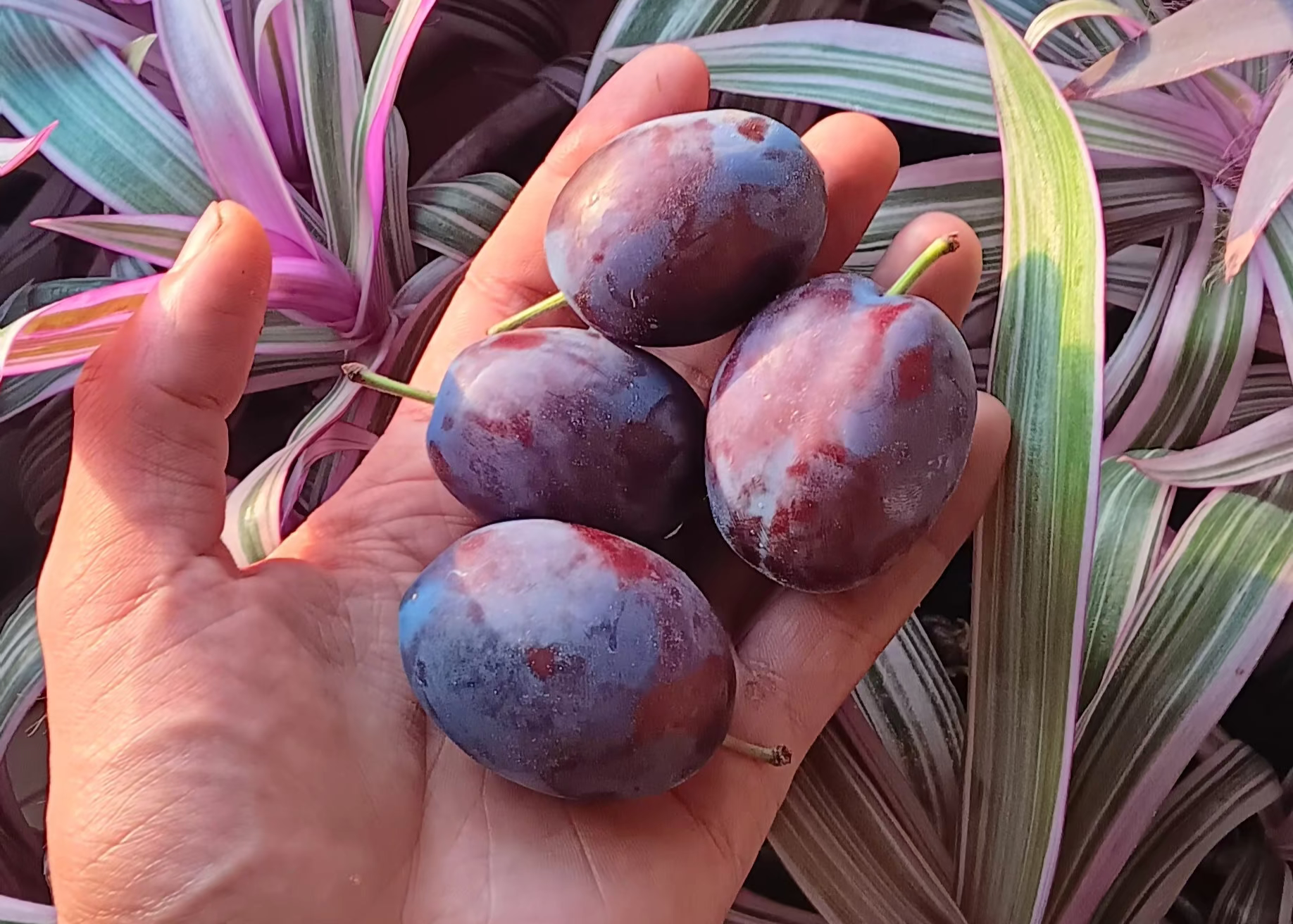Pépinière la Réfriche
European plum tree (Prunus domestica) - Zone 5
European plum tree (Prunus domestica) - Zone 5
Couldn't load pickup availability
Blue Damascus - Zone 4: This variety of European plum tree produces oval blue plums. It originates from seedlings in the Lower St. Lawrence region. It is excellent for eating fresh, making jams, prunes, or desserts. Its pit is non-adherent. The tree is slightly susceptible to black knot.
Yellow Damascus - Zone 4: This variety of European plum tree produces oval yellow plums. It is sweeter and less susceptible to black knot than the Blue Damascus plum. An interesting fact is that this plum tree is more resistant to plum weevils than the Blue Damascus plum tree.
Mont-Royal - Zone 4: This variety was developed by horticulturist William Dunlop. Its deliciously sweet and melt-in-the-mouth blue plums with yellow flesh are harvested in September and are perfect for eating fresh or processing. This variety is susceptible to black knot and the tree has a short life expectancy (maximum 25 years).
Reine Claude - Zone 5: This variety of European plum tree, also known as ‘Green Gage’, produces juicy, sweet yellow fruit with semi-adherent pits, which are harvested in mid-September. It is slightly susceptible to black knot.
Ottawa Mystery Plum - Zone 5: This plum tree is a European variety that produces large, oblong plums with a taste similar to Mont-Royal, but less sweet. It is ideal for eating fresh or for making jams and pies. This variety is susceptible to black knot, but the trees from which we collected the plums were significantly less affected by this fungus than the adjacent ‘Mont-Royal’ trees. Based on the appearance of the plums, this plum tree could probably be the ‘Stanley’, ‘German’ or another similar variety.
Biotope
Biotope
Le prunier européen peut se satisfaire de plusieurs types de sols. Il préfère les sols humides et bien drainés. Exposition plein soleil préférable.
Taille et port
Taille et port
A maturité, cet arbre fruitier peut faire 5m de haut par 3m de large. Le port et la vigueur des arbres peut varier, vu que ce sont des semis.
Pollinisation
Pollinisation
La plupart des pruniers européens sont partiellement auto fertile, mais la plantation de deux pruniers européens différent à proximité maximisera leur production. La pollinisation se fait par les insectes.
Source
Source
Nos semis de pruniers européens sont issus de prunes de cultivars récoltées à Kamouraska, Ripon et à Ottawa.
Share
